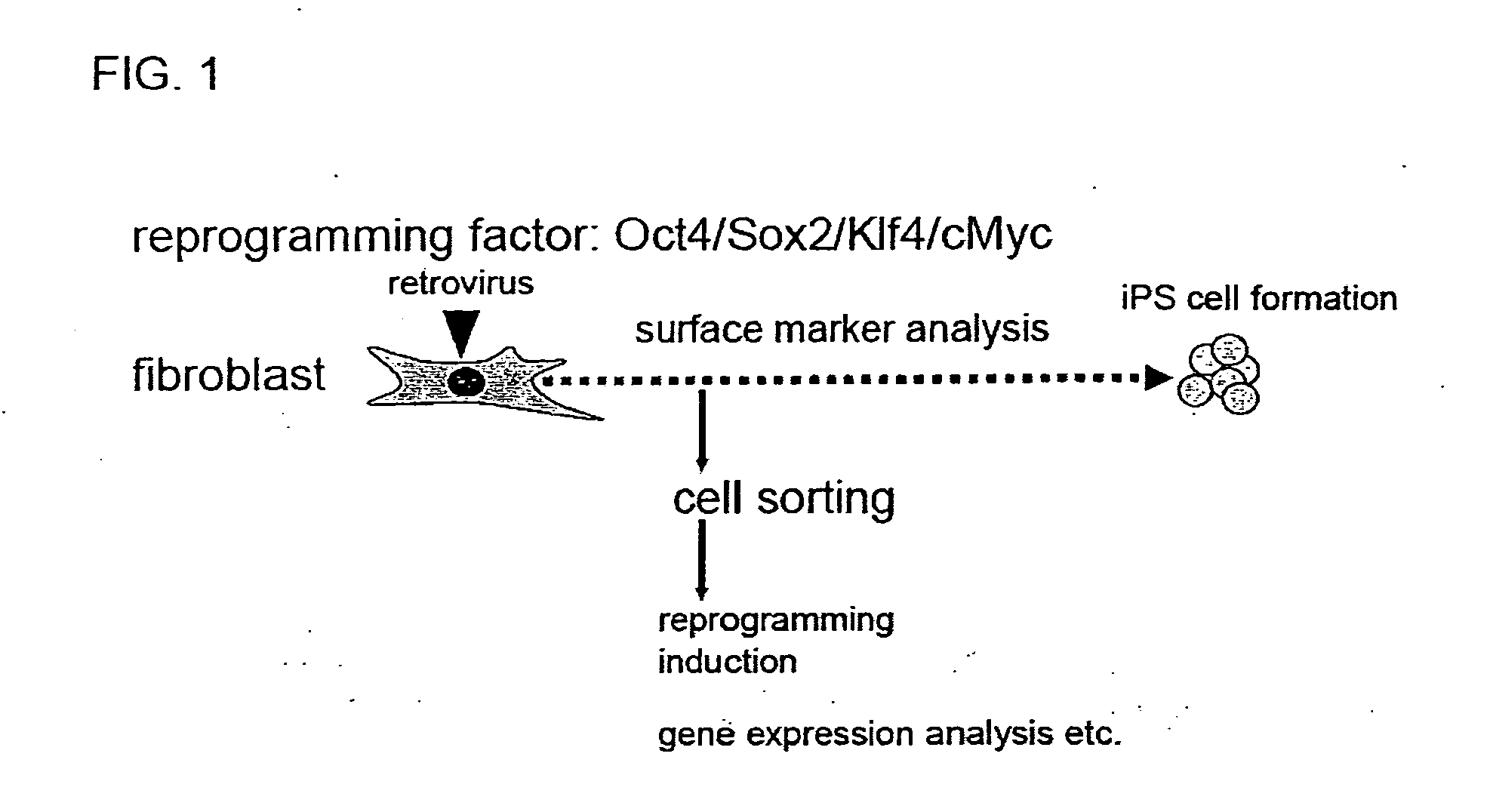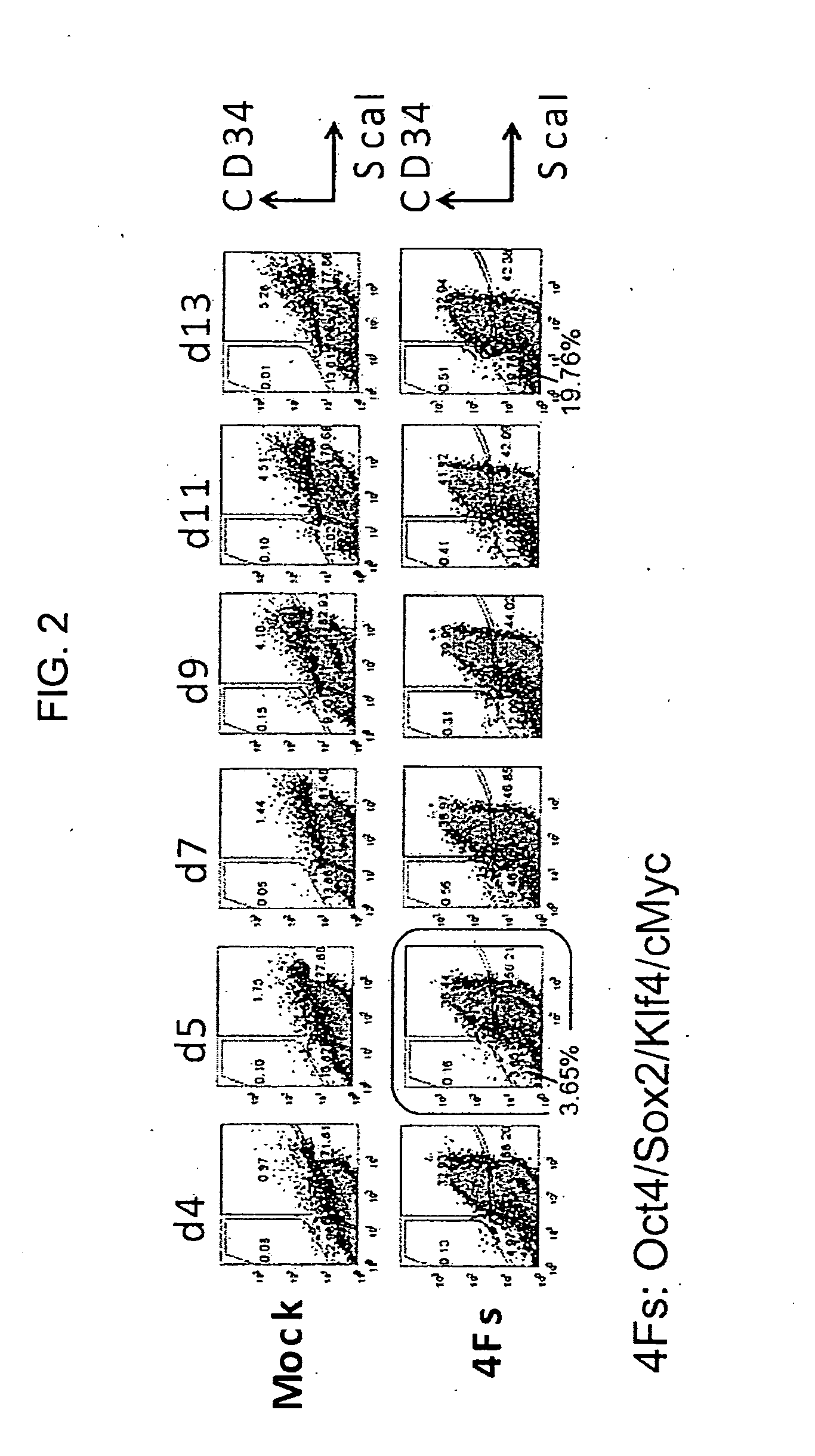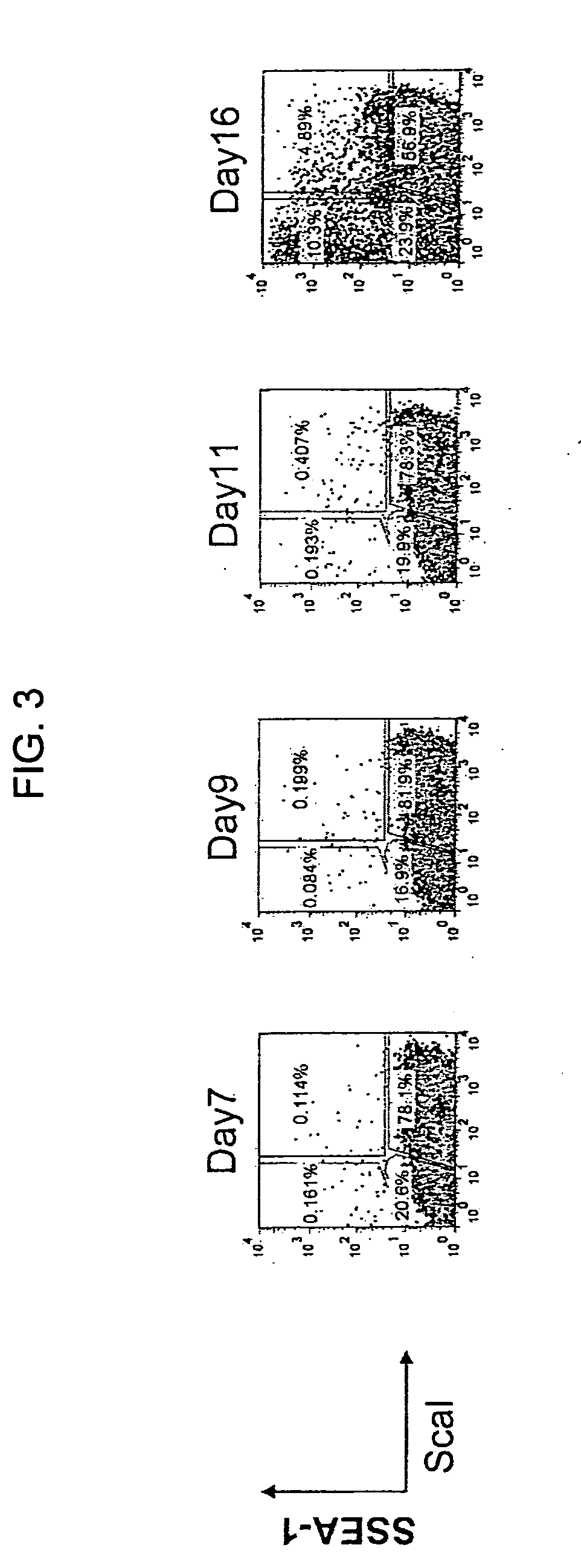Method for producing induced pluripotent stem cells, cardiomyocytes or precursor cells thereof
- Summary
- Abstract
- Description
- Claims
- Application Information
AI Technical Summary
Benefits of technology
Problems solved by technology
Method used
Image
Examples
example 1
Production of Induced Pluripotent Stem Cells
[0153]According to the method described in Takahashi, K. and Yamanaka, S., Cell, 126: 663-676 (2006), 4 factors (Oct3 / 4, Sox2, Klf4, c-Myc) derived from mouse were transferred into mouse embryonic fibroblasts by a retrovirus, and the fibroblasts were cultured in a medium (FBS mES medium without LIF). The medium composition is as described below.
TABLE 1DMEM (Invitrogen, 11995) 425 mlFetal Bovine Serum (ES grade, heat inactivated) 50 ml100x Non-essential amino acid (Millipore, TMS-001-C) 5 ml100x Nucleosides (Millipore, ES-008-D) 5 mlSodium pyruvate (x100) (Invitrogen, 11360-070) 5 mlPenicillin-Streptmycin(x100) (Invitrogen, 15140-122) 5 mlGlutamax(x100) (Invitrogen, 35050-061) 5 ml2-Mercaptoethanol (x1000) (Invitrogen, 21985-023) 1 ml(LIF (Millipore) was added at 1000 U / ml final immediately before use)
[0154]Over time, the expression of Sca-1, CD34 and SSEA1 was analyzed by flow cytometry, desired cell population was isolated by cell sorter,...
example 2
Production of Myocardial Cells
[0168]According to the method described in Takahashi, K. and Yamanaka, S., Cell, 126: 663-676 (2006), 4 factors (Oct3 / 4, Sox2, Klf4, c-Myc) derived from mouse were introduced into mouse embryonic fibroblasts by a retrovirus, and the fibroblasts were cultured in a medium (FBS mES medium without LIF). The medium composition is as described below.
TABLE 2DMEM (Invitrogen, 11995) 425 mlFetal Bovine Serum (ES grade, heat inactivated) 50 ml100x Non-essential amino acid (Millipore, TMS-001-C) 5 ml100x Nucleosides (Millipore, ES-008-D) 5 mlSodium pyruvate (x100) (Invitrogen, 11360-070) 5 mlPenicillin-Streptmycin(x100) (Invitrogen, 15140-122) 5 mlGlutamax(x100) (Invitrogen, 35050-061) 5 ml2-Mercaptoethanol (x1000) (Invitrogen, 21985-023) 1 ml
[0169]On day 5 from the introduction, each cell population of Sca-1− / CD34−, Sca-1+ / CD34+, Sca-1+ / CD34− was sorted by a cell sorter, the cells were cultured for one day, and then differentiation into a cardiac progenitor cell ...
example 3
Production of Induced Pluripotent Stem Cells by 3 Factors
[0175]According to the method described in Nakagawa, M. et al., Nat. Biotethnol., 26: 101-106 (2008), 3 factors (Oct3 / 4, Sox2, Klf4) derived from mouse were introduced into mouse embryonic fibroblasts by a retrovirus, and the fibroblasts were cultured in a medium (FBS mES medium without LIF). After 8 days from introduction of the 3 factors, each cell population of Sca-1− / CD34−, Sca-1+ / CD34+, Sca-1+ / CD34− was isolated by a cell sorter, and the cells were replated on feeder cells and cultured again under conditions suitable for iPS cell formation. As the feeder cell, MEFs treated with mitomycin C to stop cell division were used. On day 14-21 of culture, the colonies of iPS cells were visualized by an anti-Nanog antibody, and the frequency of emergence of iPS cell colonies was compared (FIG. 22). As a result, iPS cell colonies were shown to emerge at a high efficiency from the cell population of Sca-1− / CD34− even when 3 factors w...
PUM
 Login to View More
Login to View More Abstract
Description
Claims
Application Information
 Login to View More
Login to View More - R&D
- Intellectual Property
- Life Sciences
- Materials
- Tech Scout
- Unparalleled Data Quality
- Higher Quality Content
- 60% Fewer Hallucinations
Browse by: Latest US Patents, China's latest patents, Technical Efficacy Thesaurus, Application Domain, Technology Topic, Popular Technical Reports.
© 2025 PatSnap. All rights reserved.Legal|Privacy policy|Modern Slavery Act Transparency Statement|Sitemap|About US| Contact US: help@patsnap.com



